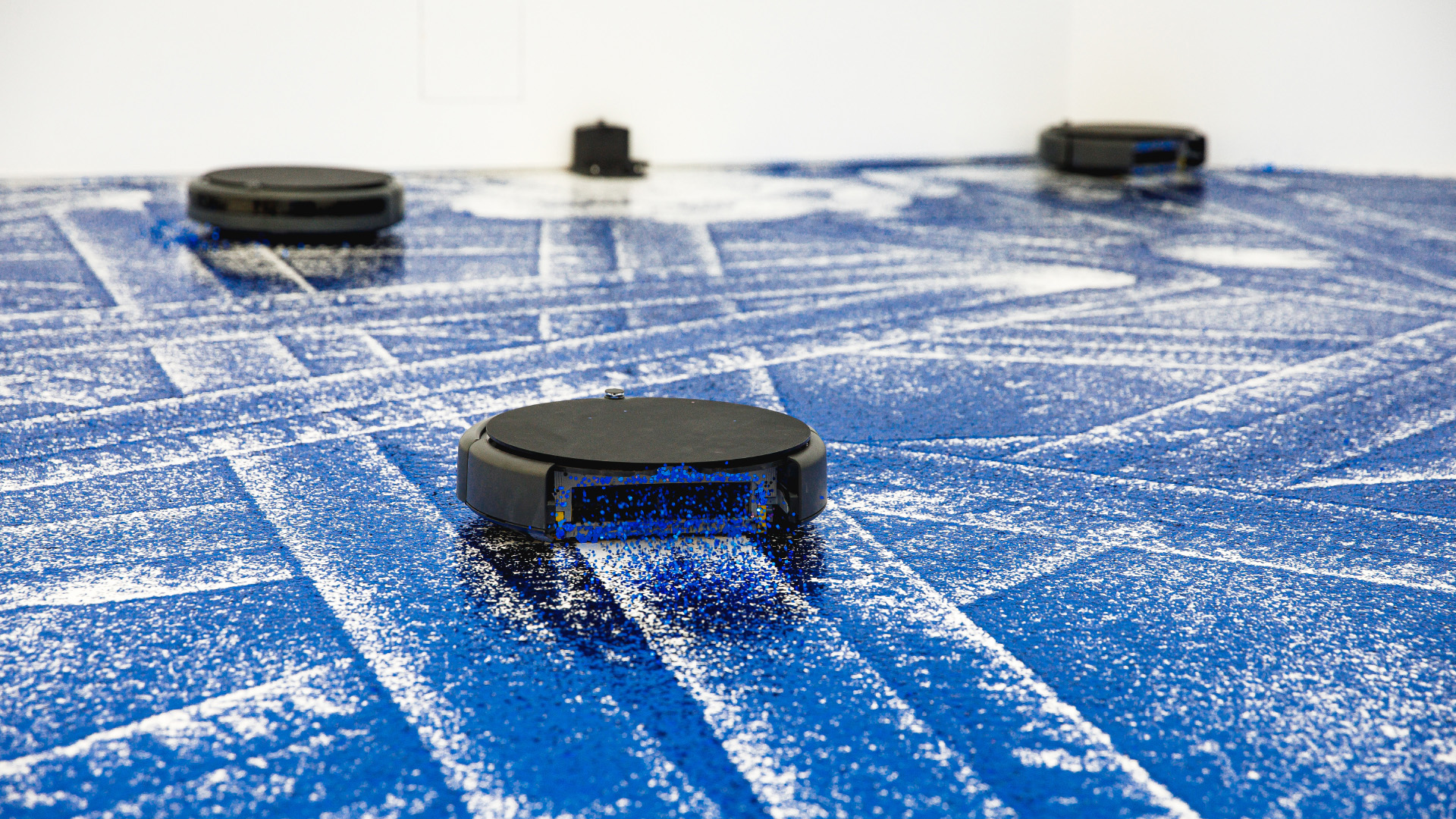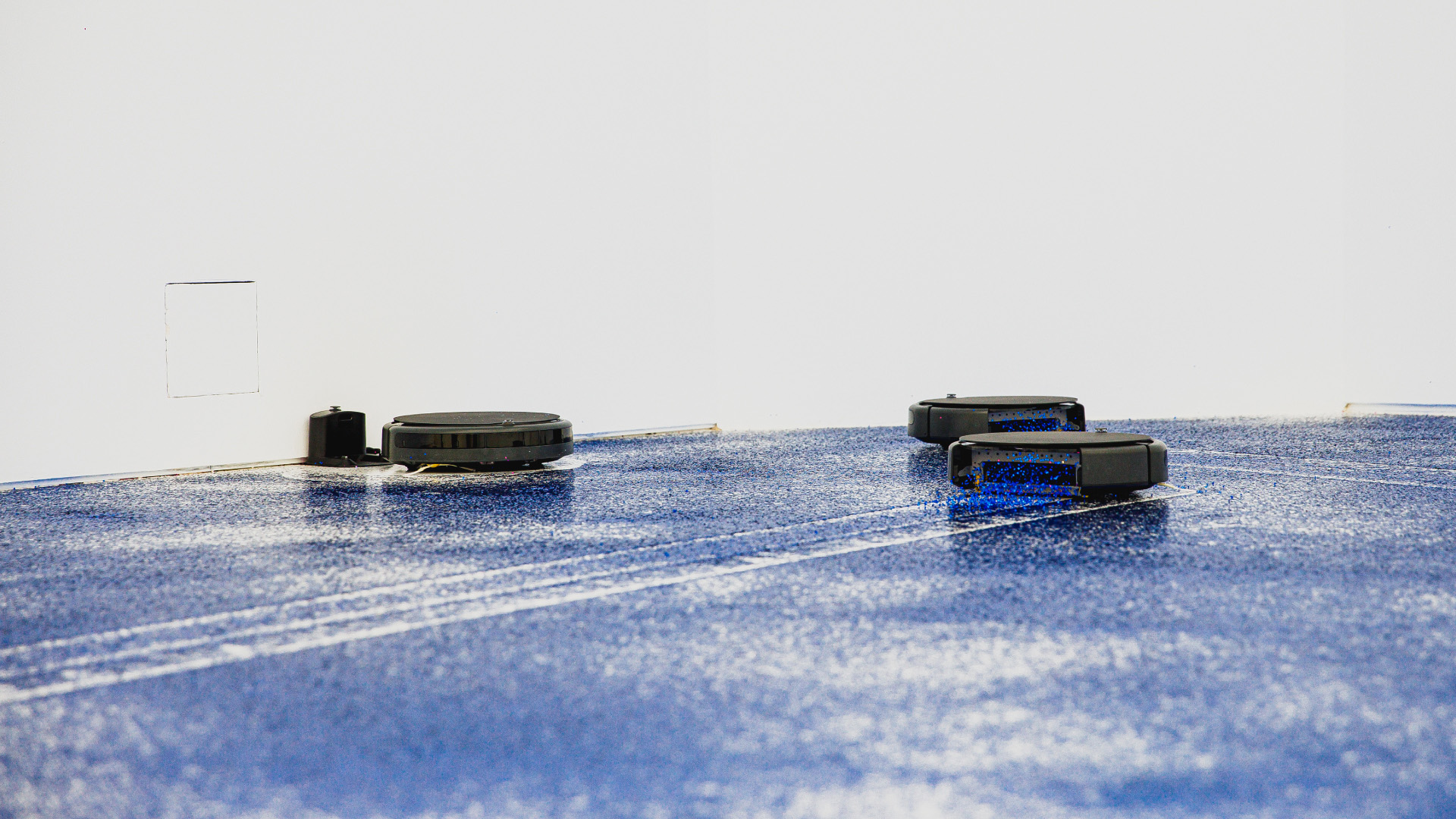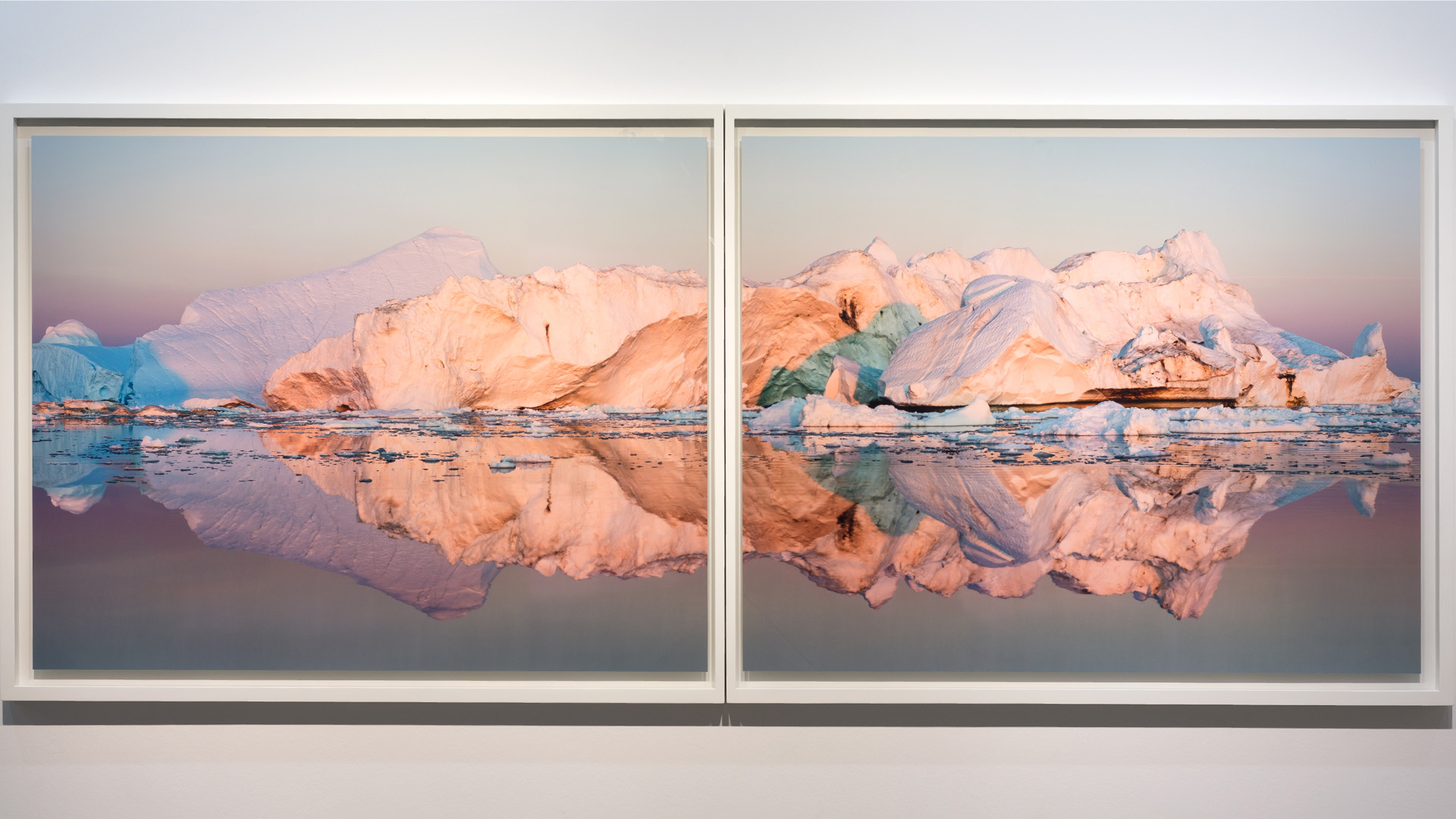Blog
*An Homage to Yves Klein
from object to hyperobject: leaving behind a trace in the void
8 November 2020 Sun
In the 1960s, when photoshop and digital photo manipulation techniques were not yet available as readily, the iconic Le Saut dans le Vide [Leap into the Void] performance was etched into our memories by Yves Klein.

DR. KUMRU EREN
Manager of Borusan Contemporary
Klein's relationship with the color blue and its associations, his following of the avant-garde art tract by establishing a relationship with "new realism” and his working to separate art from its object revealed his increasingly conceptualized art practice in his tragically short life. These days, the main exhibition space at Borusan Contemporary witnesses a similar existential crisis through robot vacuum cleaners, which represent the hybrid reality and artificial intelligence world of :mentalKLINIK, exploring the "blue depths" that Klein de-objected and dived into. By proclaiming the rise of the world of 'hyperstimulation', sixty years after Klein's attempt to de-objectify, they leave a mark in the void, just as Klein did.
1960s’ Continental Europe will be remembered as the place when the wounds of the World War II had not even begun to heal yet but where a great liberation movement took place in the arts. Let us remember that Fluxus, which left its mark on this period, used conceptual and anti-aesthetic strategies in a much more radical way than its cousin Dada. As the political and social destruction experienced caused the narratives of modernity to be gradually demolished, the representation of reality was to be dealt with as a problematic. A new space was opened up in which space, matter, and most importantly, art became independent from its object.

:mentalKLINIK, Bitter Medicine #02, 2020.
Yves Klein, whose performances could be considered in this realm, painting with rollers, refusing to use the brush, developing a color patent by appropriating the blue color, a balloon performance in the sky again referring to the blue color, the 1948 single-note composition project Monotone Symphony, using the bodies of live models in 1958 to create performative prints would lead a new Avant-garde group to be referred to as 'New Realism' with Fernandez Arman, focusing on artistic practice that reflects the desire to be anonymous.
These two works by Klein in dialogue with each other could be considered among the iconic works of 20th century art. The first of these is the blue color IKB (International Klein Blue) developed and appropriated by the artist. Yves Klein patented the color in 1960, developing it in the mid-1950s with an art paints manufacturer located in Montparnasse, Paris. IKB was mainly due to the fact that ultramarine blue preserves the original quality and color intensity of the pigment as much as possible with a synthetic resin binder. When we look at the etymology of ultramarine, ultramarinus means 'overseas or beyond the sea' because the origin of the color was derived from Lapis lazuli, a type of rock found in Mesopotamia, especially in Afghanistan, turned into a powder. This paint, which was brought to Europe by Italian merchants in the 14th and 15th centuries, was predominantly featured in the depictions of the Virgin Mary due to its expensive and rare quality during the Renaissance, and symbolized holiness and humility (perhaps the smallness of the human being against the vastness of the sky and seas). 1 Synthetic production of ultramarine blue was only possible in the first half of the 19th century. The last stop of this special blue that encompasses holiness and vastness from ancient Egypt to the Renaissance was the touch of Montparnasse and Yves Klein. Yves Klein describes his IKB in his best words: “First there is nothing, then a depth of nothingness, then a profundity of blue.”
If we look at the similar relations of appropriations of colors and the color wars between contemporary artists—such as Anish Kapoor buying the rights of Vantablack, the blackest substance on earth, and in response, his colleague Stuart Semple banning Kapoor’s use of the pinkest color by buying the copyrights of it—Yves Klein was obviously a true pioneer.
Klein associated this blue, which came from beyond the oceans and became a most intense form with his touch, with emptiness and nothingness. Also, the cult photograph by Klein from 1960, Leap into the Void also pointed to the same crisis of existence. If we recall the body of work from Plato to Heiddeger on the concept of emptiness in art ontology, it is clear that Klein's gesture of leaping refers to Heiddeger’s phenomenon of "thrown into the world as a state of being.” 2 Like Heiddeger's dasein 3 , Klein portrays having been “thrown into the world.”
The pandemic conditions that we are passing through today have created the digital twin of the void we have been thrown into. :mentalKLINIK's hybrid exhibition at Borusan Contemporary, BITTER MEDICINE # 02, points to the irony with colorful glitter particles of the world of being transformed into a screen space. This time with the difference that the dasein, being thrown into the void, is represented by robot vacuum cleaners!
In the path from de-objectification to the world of hyperreality and artificial intelligence, the blue period of BITTER MEDICINE #02 reopens the trace left in space beyond time and space to the discussion in the uncertainty of today's world. “An Homage to Yves Klein" ...
1 Lapis lazuli, from Latin lapis ‘stone’ and medieval Latin lazuli, genitive of lazulum, from Persian lāžward ‘lapis lazuli’. Arabic (el-)lâciverd
2 ÖKTEN, Kaan H., Varlık ve Zaman Bir Okuma Rehberi [Being and Time: A Reader’s Guide], Alfa Yayınları, İstanbul, 2019, p.210, 211
3 ibid.: Dasein: Dasein refers to the experience of being that is peculiar to human beings, the phenomenon of us.
ABOUT THE WRITER
Kumru Eren, D.A., has provided consultancy for both national and international collections and institutions, with a particular focus on cultural heritage development, as well as collection and asset management. She received her Doctor of Arts degree with a dissertation on the phenomenon of “Globalization of Contemporary Art in Turkey,” framed through Jean-Luc Nancy’s theories. She has given lectures on critical art theories at Marmara University in İstanbul. Her articles, critiques, and reviews have appeared in exhibition catalogues, artist monographs and cultural publications including Istanbul Art News, Artam, Varlık, Hürriyet Kitap Sanat, and Hürriyet Seyahat. She currently serves as the Artistic and Executive Director of Borusan Contemporary and is a member of AICA Türkiye (International Association of Art Critics – Türkiye), Friends of Ulay Foundation, IACCCA (International Association of Corporate Collections of Contemporary Art), the Baksı Culture and Arts Foundation, the Baksı Platform, and the TOBB Creative Industries Council.



